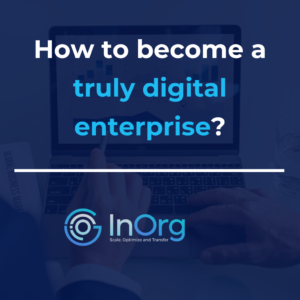In today’s rapidly evolving job market, the traditional methods of hiring are being supplemented—and in some cases replaced—by data-driven recruitment strategies. This approach not only streamlines the hiring process but also enhances its effectiveness by leveraging real-time data and analytics. With an increasing average monthly search interest in terms like ‘talent acquisition‘ and ‘AI in recruitment’, it’s clear that organizations are seeking innovative ways to attract and retain the right talent.
Understanding Data-Driven Recruitment
Data-driven recruitment refers to the use of tangible, empirical data to make hiring decisions. This may include analyzing trends in candidate sourcing, understanding skill gaps in the job market, and predicting future hiring needs. Tools and platforms that facilitate recruitment analytics play a pivotal role in this approach, enabling HR professionals to not just react to the talent market, but anticipate its changes.
The Impact of Real-Time Data on Talent Acquisition
1. Enhanced Candidate Sourcing:
Using real-time data helps companies identify where potential candidates are currently looking for jobs, what kind of roles they are interested in, and the platforms they frequent. This information can optimize sourcing strategies and tailor them to reach the right audience. For example, insights from data might suggest a surge in activity on professional networks like LinkedIn, prompting recruiters to focus their efforts there.
2. Improved Recruitment Strategies:
Real-time analytics can reveal what’s working and what isn’t in current recruitment strategies. By understanding trends such as which job descriptions receive more applications or which sourcing channels yield the best candidates, recruiters can continuously refine their approach. This ongoing optimization helps in reducing hiring times and improving the quality of hires.
3. Predictive Hiring and Talent Pools:
One of the most forward-thinking applications of recruitment data is predictive hiring, where historical data is used to forecast future hiring needs. This proactive approach not only prepares organizations for their future talent needs but also helps in creating a talent pool that can be engaged and nurtured over time, ensuring a quicker hiring process when the need arises.
4. Skill Gap Analysis:
In industries where technological advancements rapidly change job requirements, real-time data on current skill gaps can guide talent management strategies. This enables companies to not only hire for the present but also prepare for the skills they will need in the future.
Integrating the Build-Operate-Transfer Model in Recruitment Strategies
Build-Operate-Transfer (BOT): A Strategic Approach to Scaling Recruitment
The BOT model is a proven framework in various sectors, and its principles can be exceptionally beneficial in the realm of recruitment.
Advantages of the BOT Model in Recruitment:
- Expertise and Efficiency: Leveraging the specialized skills and technological resources of external providers can significantly enhance the recruitment process. External experts bring in best practices and advanced analytics that can transform the quality and speed of hiring.
- Scalability: The BOT model allows organizations to quickly scale their recruitment efforts without the upfront investment in full-scale resources and infrastructure. It is particularly beneficial for companies in growth phases or those needing rapid scaling in response to market demands.
- Risk Mitigation: Since the external provider initially manages the recruitment operations, the company reduces its risk of initial mismanagement and operational hiccups. The provider’s experience ensures that the processes are smooth and professionally handled.
- Cost-Effectiveness: Over time, the BOT model can be more cost-effective than building a full-fledged internal recruitment department from scratch. By the time the transfer is made, the organization has a fully operational recruitment process without the usual trial-and-error costs.
- Focus on Core Business: This model allows the company’s management to focus on core business activities, knowing that the recruitment process is in expert hands and will be seamlessly transferred once it’s optimized.
Best Practices in Data-Driven Recruitment
To effectively implement a data-driven recruitment strategy, here are some best practices:
a. Leverage the Right Tools:
Invest in recruitment tools that offer robust data analytics capabilities. Platforms that can integrate with other HR systems (like ATS and HRIS) provide a more holistic view of the recruitment landscape.
b. Data Quality and Consistency:
Ensure that the data you collect is of high quality and consistently categorized. Poor data can lead to misguided insights, which can affect hiring decisions.
c. Continuous Learning and Adaptation:
The job market is dynamic, and what works today might not work tomorrow. Continuously learn from the data and be ready to pivot your strategies as needed.
d. Privacy and Compliance:
When implementing data-driven strategies, always be cognizant of privacy laws and ethical considerations. Ensure that candidate data is handled securely and in compliance with regulations like GDPR.
Conclusion
Real-time data and analytics are transforming recruitment by providing insights that were not previously accessible. As search trends indicate a growing interest in data-driven recruitment methods, it’s clear that more organizations are recognizing the benefits of this approach. By effectively utilizing real-time data, companies can not only fill positions more quickly but can also ensure they are hiring the most suitable candidates for their needs, ultimately leading to sustained organizational success.
With tools and strategies that harness the power of data, recruitment is no longer just about filling vacancies—it’s about building a future-ready workforce. Learn more about how we harness these innovations at InOrg.





